
views
X
Research source
In order to tell whether air pressure is rising or falling, you must calibrate the barometer correctly. When you purchase a barometer, it must be adjusted before you can use it to accurately measure atmospheric pressure.
Setting the Barometer
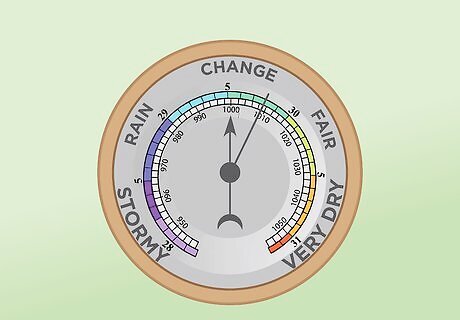
Buy a barometer. There are 3 types of barometers that can be purchased. If you own an antique barometer, then is most likely mercury or aneroid. Aneroid or electronic barometers are more commonly available for purchase. Before purchasing a barometer, check its altitude usage. Not all barometers function properly at high altitudes so buy one that can specifically be used at altitude if you live high above sea level. Here are some brief descriptions of each type of barometer: Mercury: The mercury barometer, sometimes called a stick barometer, was the first to be invented. It uses an open tube system with a pool of mercury that rises and falls with pressure changes. They only work at an altitude up to 1,000 feet. Aneroid: The aneroid barometer doesn't use any liquids. It uses a small box made from beryllium and copper that expands or contracts based on pressure changes. These motions cause mechanical hands to move pointing towards the current air pressure. Electronic: Electronic barometers are a little more complicated to understand, but they employ sensors and strain gauges that cause changes in voltage that can be converted to a display of pressure for the user.
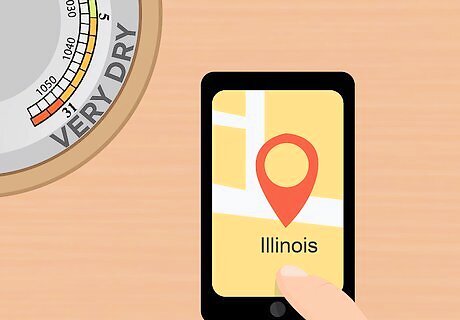
Obtain a local reading of barometric pressure. If using an aneroid barometer, you will need to calibrate it to your location. Listen to a local weather forecast to find the current barometer pressure for your location. Make sure the reading is correct for your location. Even a few miles can affect a barometer reading. Setting your barometer to your location will take into account differences in pressure caused by the altitude of your location. The factory setting for aneroid barometers is at sea level, but if you don't live at sea level, you will need to calibrate it.
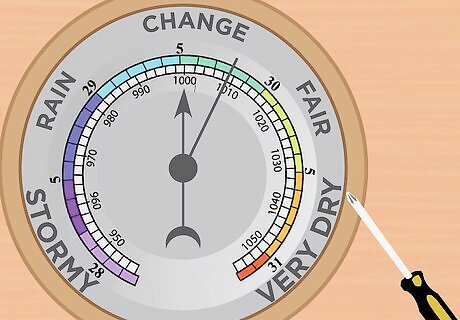
Set the indicator hand on your barometer. Locate the small adjusting screw on the back of your barometer. With a small screwdriver, turn the adjusting screw to move the hand to your location's current pressure. Watch the face of the dial and stop turning the screwdriver when the hand reaches the appropriate reading. If you are using a mercury barometer, you will have to use a conversion for your readings. Digital barometers have sensors to calibrate altitude automatically.
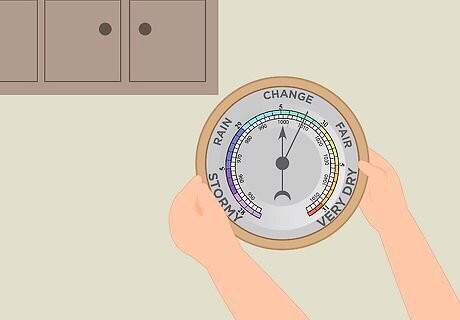
Hang the barometer in a location that works for you. It makes no difference whether the barometer is hung on an inside or an outside wall. The pressure will be the same both indoors and outdoors. Well-sealed and air-conditioned rooms are not as affected by changes in air pressure, so avoid these rooms if possible. Avoid a location that is exposed to direct sunlight as the temperature changes can affect the readings. Hang the barometer away from drafty locations, like near a door or a window. Air pressure is too variable in these locations.
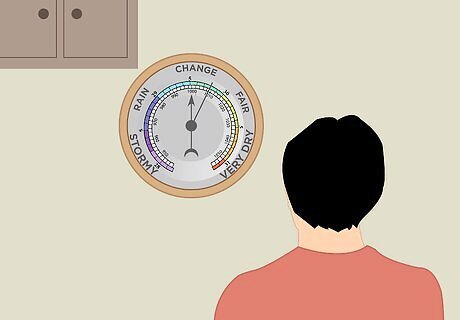
Check occasionally to be sure that your barometer works properly. If you suspect inaccurate readings, you can check your barometer with an easy trick. With the barometer hanging on the wall, slowly slide the bottom of it sideways to a 45-degree angle. If you have a mercury barometer, the mercury should rise to the top of the tube and produce an audible "tick" sound that you may also feel. The tube should fill with mercury. If you have an aneroid barometer, the indicator hand should rotate clockwise around the dial. If your barometer fails this test, you may need to have it professionally serviced and re-set before you can count on its accuracy. However, most barometers can last years with no servicing.
Using the Barometer

Set the manual hand to the current reading. Turn the barometer's center knob so that the arrow rests directly above the indicator arrow (this is the current barometric pressure for your location). You can identify the set hand by its notched arrow about halfway down the hand. The set hand will serve as a reference that allows you to easily tell if the pressure is steady, rising or falling. Remember, this hand will only be present on an aneroid barometer. If you have an electronic barometer, you can simply check the reading. If you have a mercury barometer, you will need to correct for altitude if you're above sea level.
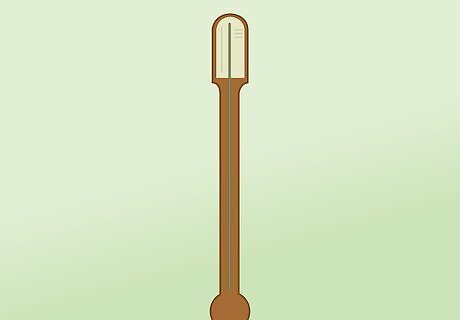
Correct for altitude if you're using a mercury barometer. To accurately measure the air pressure using a mercury barometer, you will need to correct for your altitude using a conversion chart, which can be found online. Look at the barometer at eye level and record the number next to the top of the mercury. This is the pressure in millimeters of mercury (mmHg). Find your elevation and then use the chart to find the relevant correction factor. Add the correction factor to the reading on the barometer. This reading should match the reading of the local weather service. If you are at an elevation of over 1,000 ft, mercury barometers do not work.

Check the barometer an hour later. Predicting weather using a barometer is all about changes in air pressure. You want to check the reading every few hours to determine if the pressure is changing or staying the same. If using an aneroid or mercury barometer, gently tap the face of the barometer to release any pressure changes stored in the mechanisms. Take the reading after the needle or mercury has stopped moving. For the aneroid barometer, move the set hand if the pressure has changed so the next time you check it will be obvious what direction the air pressure is going.

Chart the changes in pressure. Keep a journal of all the readings you take with your barometer. Sketch a small graph for the changes in a day to help with your forecasting. Is the pressure rising? Falling? Staying the same? This is all important information for predicting the weather. Do not expect large changes in the movement of the needle. Daily changes are usually between 0.02 and 0.10 of an inch using the barometer scale. Variations are dependent upon location and altitude. Take frequent readings (every few hours) and plot them on your graph.
Forecasting the Weather

Predict rain if the air pressure is falling. Generally, if the pressure is falling, the weather is taking a turn towards storms and rain. The starting point of the reading is also important in the forecast. Higher readings indicate better weather even if the pressure is falling. If the reading is over 30.2 inches of mercury and falling rapidly, this indicates cloudy, but warmer weather. If the reading is between 29.8 and 30.2 inches of mercury and falling rapidly, rain is most likely on the way. If it's under 29.8 inches of mercury and falling slowly, rain is likely; if it's falling rapidly, a storm is imminent.

Forecast improving weather when air pressure rises. As the air pressure rises, the weather tends to improve as the high pressure systems moves through your location. Readings over 30.2 inches of mercury that rise indicate that the weather will continue to be fair. Readings between 29.8 and 30.2 inches of mercury that rise indicate that the weather will remain whatever it presently is. Readings under 29.8 inches of mercury that rise indicate that the weather is clearing, but will be cooler.

Forecast fine weather when air pressure is steady. Steady air pressure indicates long periods of nice weather and suggests that you will be experiencing more of the same. If it's sunny and the pressure is holding, expect more sunshine! Higher pressures indicate warmer weather, while lower pressures indicate cooler weather. A strong high pressure system is around 30.4 inches of mercury. Anything above 30 is considered high pressure. A typical low pressure system is around 29.5 inches of mercury. Anything below 29.9 is considered low pressure.













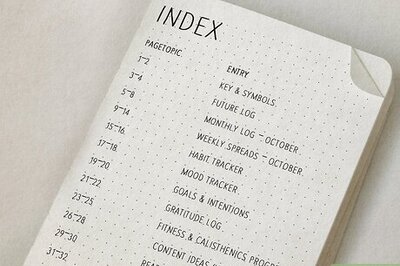

Comments
0 comment